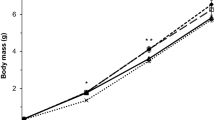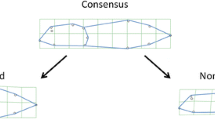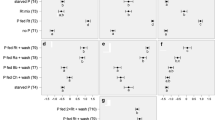Abstract
When predator chemical cues are present, low activity of prey is a commonly seen defensive behavior. However, few studies have explored the functional implications of the defensive behaviors and, thus, elucidated the possible linkages between behavioral responses and its consequences. In this study, we experimentally investigated how behavioral responses of Hyla japonica tadpoles to predator chemical cues affect vulnerability to a dragonfly nymph Anax parthenope julius. The frequency of tadpoles attacked by dragonfly nymphs was lower with chemical cues of predator was present than without chemical cues, and most of attacks occurred when tadpoles were mobile. When tadpoles were exposed to chemical cues, on the other hand, their swimming speed was quicker and swimming distance was longer, respectively, and the rates of being approached of the swimming tadpoles by dragonfly nymph was lower than those not exposed to chemical cues. We found that the tadpoles are induced by predator chemical cues not only to generally lower activity but also to swim in bursts as additional behavior and that the suite of their behavioral responses reduce the vulnerability against dragonfly nymph. Tadpoles can receive information about the predation risks by chemical cues and adjust their defensive behavior accordingly.


Similar content being viewed by others
References
Altwegg R (2003) Hungry predators render predator-avoidance behavior in tadpoles ineffective. Oikos 100:311–316
Anholt BR, Werner EE (1995) Interaction between food availability and predation mortality mediated by adaptive behavior. Ecology 76:2230–2234
Anholt BR, Werner EE (1998) Predictable changes in predation mortality as a consequence of changes in food availability and predation risk. Evol Ecol 12:729–738
Chivers DP, Mirza RS (2001) Importance of predator diet cues in responses of larval wood frogs to fish and invertebrate predators. J Chem Ecol 27:45–51
Dodson SI, Crowl TA, Peckarsky BL, Kats LB, Covich AP, Culp JM (1994) Non-visual communication in freshwater benthos: an overview. J N Am Benthol Soc 13:268–282
Iwasawa H, Futagami J (1992) Normal stages of development of a tree frog, Hyla japonica Günther. Jpn J Herpetol 14:129–142 (in Japanese with English summary)
Kats LB, Dill LM (1998) The scent of death: chemosensory assessment of predation risk by prey animals. Ecoscience 5:361–394
Kiesecker JM, Chivers DP, Blaustein AR (1996) The use of chemical cues in predator recognition by western toad tadpoles. Anim Behav 52:1237–1245
Lima SL (1998) Nonlethal effects in the ecology of predator-prey interactions. Bioscience 48:25–34
Lind J, Cresswell W (2005) Determining the fitness consequences of antipredation behavior. Behav Ecol 16:945–956
Maeda N, Matsui M (1999) Frogs and toads of Japan. Revised edn. Bun-ichi Sogo Shuppan, Tokyo (in Japanese)
Mathis A, Vincent F (2000) Differential use of visual and chemical cues in predator recognition and threat-sensitive predator-avoidance responses by larval newts (Notophthalmus viridescens). Can J Zool 78:1646–1652
McCoy MW, Bolker BM (2008) Trait-mediated interactions: influence of prey size, density and experience. J Anim Ecol 77:478–486
Pritchard G (1965) Prey capture by dragonfly larvae (Odonate; Anisoptera). Can J Zool 43:271–289
Puttlitz MH, Chivers DP, Kiesecker JM, Blaustein AR (1999) Threat-sensitive predator avoidance by larval pacific treefrogs (Amphibia, Hylidae). Ethology 105:449–456
Richardson JML (2001) A comparative study of activity levels in larval anurans and response to the presence of different predators. Behav Ecol 12:51–58
Ruxton GD, Sherratt TN, Speed MP (2004) Avoiding attack: the evolutionary ecology of crypsis, warning signals and mimicry. Oxford university press, Oxford
Sih A, Englund G, Wooster D (1998) Emergent impacts of multiple predators on prey. Trends Ecol Evol 13:350–355
Skelly DK (1994) Activity level and the susceptibility of anuran larvae to predation. Anim Behav 47:465–468
Takahara T, Kohmatsu Y, Maruyama A, Yamaoka R (2006) Specific behavioral responses of Hyla japonica tadpoles to chemical cues released by two predator species. Current Herpetol 25:65–70
Turner AM, Montgomery SL (2003) Spatial and temporal scales of predator avoidance: experiments with fish and snails. Ecology 84:616–622
Warkentin KM (1999) The development of behavioral defenses: a mechanistic analysis of vulnerability in red-eyed tree frog hatchlings. Behav Ecol 10:251–262
Watkins TB (1996) Predator-mediated selection on burst swimming performance in tadpoles of the pacific tree frog, Pseudacris regilla. Physiol Zool 69:154–167
Wellborn GA, Skelly DK, Werner EE (1996) Mechanisms creating community structure across a freshwater habitat gradient. Annu Rev Ecol Syst 27:337–363
Zar JH (1999) Biostatistical analysis, 4th edn. Prentice Hall, New Jersey
Acknowledgements
We are grateful to Dr. Jeffrey R. Aldrich of the USDA for useful comments on the manuscript and language revision. We would like to thank Dr. T. Nisimura of the University of Shiga Prefecture for constructive and helpful comments on the experiment and manuscript. We also are grateful to Drs. A. Wada-Katsumata of the Kyoto University and H. Yamanaka of the Research Institute for Humanity and Nature for useful advices to the experiment design and members of the Laboratory of Animal Ecology, Kyoto University for discussion and comments on the experiment. This study was supported by grants from the Research Institute for Humanity and Nature, the Venture Laboratory of the Kyoto Institute of Technology, and the Research Fellowship of the Japan Society for the Promotion of Science for young scientists (No. 07071) to T. Takahara. The experiments comply with the current Japan laws.
Author information
Authors and Affiliations
Corresponding author
Additional information
Communicated by J. Christensen-Dalsgaard
Rights and permissions
About this article
Cite this article
Takahara, T., Kohmatsu, Y., Maruyama, A. et al. Benefit of suites of defensive behavior induced by predator chemical cues on anuran tadpoles, Hyla japonica . Behav Ecol Sociobiol 63, 235–240 (2008). https://doi.org/10.1007/s00265-008-0654-9
Received:
Revised:
Accepted:
Published:
Issue Date:
DOI: https://doi.org/10.1007/s00265-008-0654-9




